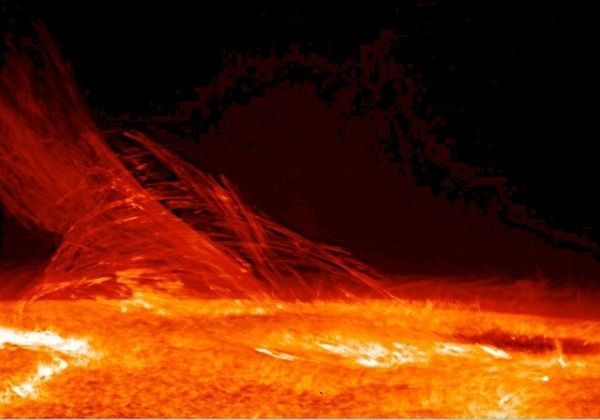Space weather forecasters need to predict the speed of solar eruptions, as much as their size, to protect satellites and the health of astronauts, scientists have found.
Scientists at the University of Reading found that by calculating the speed of coronal mass ejections (CMEs) when they hit Earth, forecasters could provide more useful early warnings. This would help operators of critical infrastructure such as satellites know if they need to take evasive action or switch off systems to protect them, and warn astronauts when they need to shelter inside shielded parts of the International Space Station.
Coronal mass ejections are caused by huge eruptions of material from the sun, travelling through interplanetary space and disturbing the Earth's own magnetic field system. Using solar imagers to measure the speed of CMEs close to the Sun, it is possible to forecast the arrival time of a CME at Earth.
Operators of technological systems, such as satellites, which are vulnerable to space weather then have the opportunity to take action to limit the damage. However, scientists say such warnings could be more useful if combined with more sophisticated information about the severity of a storm when it hits Earth.
Read more at University of Reading
Photo Credit: WikiImages via Pixabay


